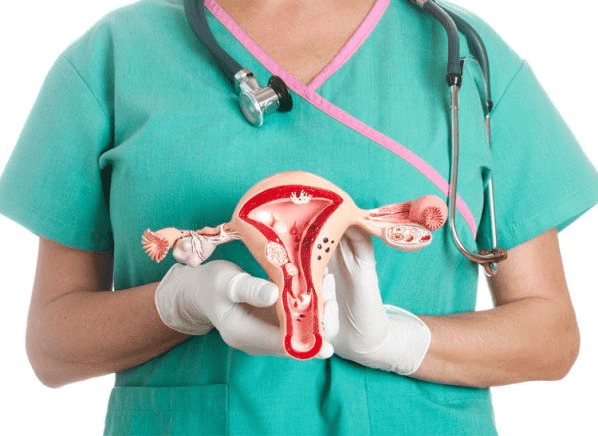Treatment For Cervical Cancer
Treatment for cervical cancer - Cervical cancer and uterine cancer are two forms of cancer that both arise in the womb. Yet the diseases are very different. Cervical cancer develops in the mucous membrane of the cervix, uterine cancer develops in the cells of the uterus above the cervix. In the early stage of cervical cancer, there are abnormal cells in the cervix. These can disappear or be removed spontaneously.
Cause of cervical cancer
Cervical cancer, like other forms of cancer, is caused by a disruption of the division of cells. Yet there are a number of risk factors that increase your chance of cervical cancer.
In the beginning of the disease, there are only changes to the cells of the cervix. At this stage of the disease, no clear symptoms can be distinguished. Bleeding is usually the first noticeable phenomenon. This bleeding can occur:
Treatment for cervical cancer
There are various treatments possible for cervical cancer:
Cryotherapy or laser therapy
In some stages, the cervix can be treated with freezing or laser therapy. The malignant cells are thus taken away.
Surgery
Depending on the spread of cancer, part of the cervix or the entire uterus can be removed. Possibly the ovaries, fallopian tubes and lymph nodes can be removed. This depends on your personal situation.
Irradiation
Using radiation is attempted to kill the diseased cells, while the healthy cells are affected as little as possible.
Chemotherapy
Chemotherapy (cell-killing and cell-division drugs) is often combined with radiation in the case of cervical cancer. The effect of the radiation is increased by simultaneous chemotherapy.
Heat treatment (hyperthermia)
During the heat treatment, a certain part of your body is heated to 42 degrees Celsius. Then this temperature is maintained for 60 to 90 minutes. Healthy cells have no trouble with these temperatures, but cancer cells do. Some of the cancer cells will die off, apart becomes extra sensitive to other treatments. Heat treatment will therefore only take place in combination with other therapies.
Cause of cervical cancer
Cervical cancer, like other forms of cancer, is caused by a disruption of the division of cells. Yet there are a number of risk factors that increase your chance of cervical cancer.
- Human Papilloma Virus (HPV) plays a role in cervical cancer. This virus is transmitted to sexual intercourse. Research shows that cervical cancer is more common in women who are infected with HPV. To reduce the risk of cervical cancer through HPV, young girls (around 12 years) can be vaccinated against the HPV via the National Vaccination Program. The vaccination consists of three pricks that are given at different times.
- Smoking: Cervical cancer is more common in women who smoke.
- Pill: Use of the pill could possibly increase the chance of cervical cancer. Probably this is not because the pill contains 'wrong' substances, but because pill users do not always use condoms and are therefore more likely to get infected with HPV.
- DES: Daughters of women who have received the DES hormone during pregnancy are more likely to have cancer in the cervix. DES was a medicine that was claimed to reduce the risk of miscarriage.
In the beginning of the disease, there are only changes to the cells of the cervix. At this stage of the disease, no clear symptoms can be distinguished. Bleeding is usually the first noticeable phenomenon. This bleeding can occur:
- Just after sexual intercourse.
- Between two menstruations.
- After the transition. This is not always recognized because women think that this is a recurrent menstrual period. Yet the chance is small that menstruation returns if it has been absent for a year.
Treatment for cervical cancer
There are various treatments possible for cervical cancer:
Cryotherapy or laser therapy
In some stages, the cervix can be treated with freezing or laser therapy. The malignant cells are thus taken away.
Surgery
Depending on the spread of cancer, part of the cervix or the entire uterus can be removed. Possibly the ovaries, fallopian tubes and lymph nodes can be removed. This depends on your personal situation.
Irradiation
Using radiation is attempted to kill the diseased cells, while the healthy cells are affected as little as possible.
Chemotherapy
Chemotherapy (cell-killing and cell-division drugs) is often combined with radiation in the case of cervical cancer. The effect of the radiation is increased by simultaneous chemotherapy.
Heat treatment (hyperthermia)
During the heat treatment, a certain part of your body is heated to 42 degrees Celsius. Then this temperature is maintained for 60 to 90 minutes. Healthy cells have no trouble with these temperatures, but cancer cells do. Some of the cancer cells will die off, apart becomes extra sensitive to other treatments. Heat treatment will therefore only take place in combination with other therapies.
*Image source : Consumer Reports
References :

Post a Comment for "Treatment For Cervical Cancer"